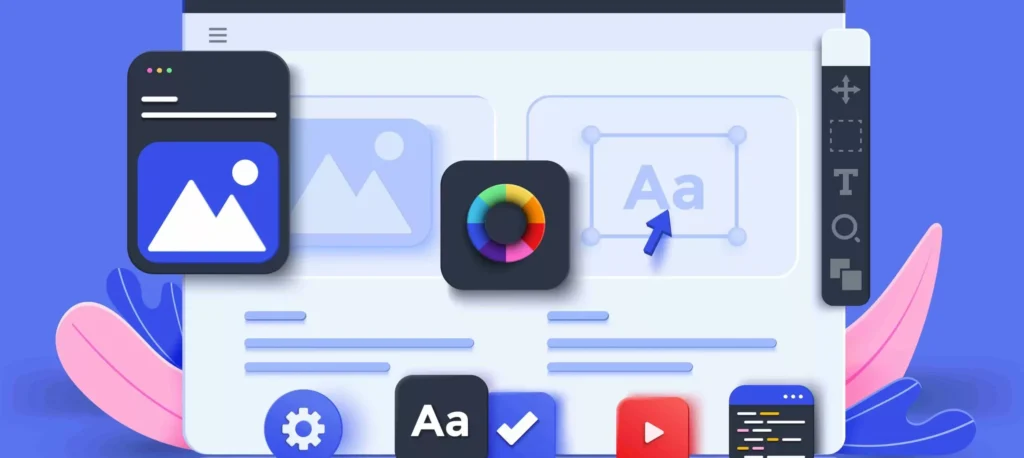In today’s digital age, creating a seamless, engaging experience for website visitors is no longer optional – it’s a necessity. As the competition among businesses and online services continues to grow, companies must prioritize user experience (UX) web development to stay ahead of the curve.
In this blog post, we will explore why UX is crucial in web development and how it affects everything from customer satisfaction to conversions and SEO performance.
What is UX Web Development?
UX, or user experience, refers to the overall experience a user has when interacting with a website, application, or any digital product. UX web development focuses on optimizing the design, functionality, and usability of a website to ensure users have a positive experience. A great UX makes websites easy to navigate, visually appealing, and functional, all while addressing the needs of the users.
UX web development goes beyond just design – it also involves understanding user behavior, improving site architecture, and making the overall experience as intuitive and enjoyable as possible. By keeping the user at the center of the design process, businesses can create websites that not only meet but exceed user expectations.
Why UX Web Development is Crucial for Success

1. Improved Customer Satisfaction
A well-executed UX design leads to a smoother and more enjoyable experience for the user. The easier it is for users to find what they are looking for and interact with a website, the more satisfied they will be with their visit. Happy users are more likely to return and engage with your brand, increasing customer loyalty.
User satisfaction is a key factor that directly influences whether a visitor will make a purchase, sign up for a service, or recommend your website to others. With user-friendly design, intuitive navigation, and fast load times, your website will leave a lasting positive impression.
2. Increased Conversions
When a website is easy to navigate, visually appealing, and works as intended, users are more likely to take the actions you want them to – whether it’s purchasing a product, filling out a contact form, or subscribing to a newsletter. A streamlined UX increases the likelihood of conversions by reducing friction and making it easier for users to complete their desired actions.
On the flip side, a poor UX can result in frustrated users who abandon their shopping cart or leave your site without taking any action. By focusing on UX web development, businesses can optimize their sites to boost conversions and revenue.
3. Better SEO Rankings
Search engines like Google prioritize websites that offer a positive user experience. Factors such as page load speed, mobile responsiveness, and ease of navigation all play a significant role in SEO rankings. If your website is hard to use, slow to load, or difficult to navigate, search engines may penalize it by lowering its ranking in search results.
On the other hand, websites that are optimized for UX are more likely to rank higher in search results. When users can easily find information and navigate your website, they are more likely to spend time on your site, reducing bounce rates and improving SEO performance.
4. Enhanced Brand Image
A website that delivers a great UX helps to build a positive image for your brand. In the digital world, your website often serves as the first point of contact between your business and potential customers. A well-designed, user-friendly website communicates professionalism, trustworthiness, and attention to detail.
If users experience frustration when interacting with your website, they may perceive your brand as unprofessional or unreliable. On the other hand, a smooth, enjoyable experience reinforces the idea that your company cares about its customers and is committed to providing high-quality products or services.
5. Faster Load Times
Website load time is a critical aspect of UX web development. According to studies, users expect websites to load in less than three seconds – and if a page takes longer than that, they are likely to leave. Slow load times not only frustrate users but can also negatively impact SEO rankings.
Optimizing your website for faster load times is an essential part of the UX design process. By reducing unnecessary elements, optimizing images, and utilizing caching techniques, you can ensure that your website loads quickly and provides a better experience for users.
6. Mobile Responsiveness
In an era where mobile devices account for a significant portion of web traffic, ensuring that your website is responsive and user-friendly on smartphones and tablets is essential. A mobile-friendly website adjusts to different screen sizes and provides the same high-quality user experience across all devices.
Mobile responsiveness is particularly important because Google uses mobile-first indexing – meaning that Google primarily looks at the mobile version of a website for ranking purposes. If your site isn’t mobile-friendly, you risk losing both customers and search engine rankings.
7. Improved Accessibility
Accessibility is a key component of UX web development. Ensuring that your website is accessible to all users, including those with disabilities, is not only ethically important but also legally required in some regions. Accessibility features such as alternative text for images, keyboard navigation, and screen reader compatibility ensure that users with disabilities can interact with your site.
By incorporating accessibility best practices into your UX design, you can create a more inclusive website that serves a broader audience and enhances the overall user experience.
Best Practices in UX Web Development

Now that we’ve established why UX is so important, let’s take a look at some best practices in UX web development to help you get started:
1. Understand Your Users
To design an effective user experience, you need to understand who your users are and what they want. Conduct user research, such as surveys, interviews, and usability testing, to gather insights into your audience’s needs, behaviors, and pain points. This information will guide your design decisions and help you create a website that truly serves your users.
2. Focus on Simplicity
When it comes to UX, simplicity is key. A cluttered, complicated website will only confuse users and make it harder for them to find what they’re looking for. Keep the design clean and minimal, with intuitive navigation that guides users through the site without overwhelming them.
3. Prioritize Content Hierarchy
Effective content hierarchy helps users navigate your website and find information quickly. Use clear headings, subheadings, and bullet points to break up content and make it easy to scan. Prioritize important information by placing it in prominent positions on the page.
4. Optimize for Speed
As mentioned earlier, website speed is crucial for both UX and SEO. Optimize your website for faster load times by compressing images, minimizing code, and leveraging browser caching. A fast website not only improves UX but also keeps users engaged and reduces bounce rates.
5. Test, Test, and Test Again
User testing is an essential part of the UX web development process. Conduct usability tests to identify pain points and areas for improvement. Regular testing ensures that your website meets the needs of your users and remains up-to-date with evolving design trends and technologies.
Conclusion
In the competitive world of web development, UX plays a pivotal role in determining the success of a website. By focusing on user experience, businesses can improve customer satisfaction, boost conversions, enhance SEO rankings, and build a positive brand image. A seamless, intuitive UX not only benefits users but also provides a significant return on investment for businesses.
Investing in UX web development is not just about aesthetics – it’s about understanding your users, meeting their needs, and delivering a memorable experience that keeps them coming back for more. Whether you’re redesigning an existing site or building a new one, prioritize UX to ensure your website stands out in today’s crowded digital landscape.

